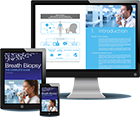In a recent report published in the PNAS Journal, researchers in Ireland and the United Kingdom (UK) investigated global trends in emotional discomfort.

Study: Global trends in emotional distress. Image Credits: fizkes/Shutterstock.com
Background
Studies have reported a considerable rise in psychological distress among United States (US) and UK residents in recent years, associated with working age, labor market precarity, and lower educational status. The rise in ‘death of despair’ was reportedly aggravated by the coronavirus disease 2019 (COVID-19).
Globally, the population-level economic crisis between 2008 and 2010 and during the severe acute respiratory syndrome coronavirus 2 (SARS-CoV-2) outbreak in 2020 is associated with poorer mental health and greater emotional discomfort among affected countries. However, global trends in discomfort need to be investigated.
About the report
In the present report, researchers examined emotional discomfort by analyzing the yearly Gallup World Poll (GWP) survey information of 1.50 million individuals surveyed across 113 nations between 2009 and 2021.
The surveys were filled out by individuals aged ≥15 years to obtain data on experiences of sorrow, worry, anger, and stress the preceding day. Random telephone numbers were dialed from a national directory to conduct telephonic surveys. In addition, surveys were distributed physically in nations with less telephone coverage, including Asia, Africa, and the Middle East.
During COVID-19, most individuals were surveyed via telephone conversations, and 1,000 individuals participated in surveys annually. Countries were included in the analysis if data were available for >50% of the study period, including the SARS-CoV-2 pandemic period.
The percentage of maximum possible (POMP) scores were analyzed to enable documenting regression coefficients as percentage points and to facilitate comparison between the total discomfort scores and individual discomfort-associated item scores.
Data were obtained on individual ages (grouped as <35 years, between 35 and 54 years, and >55 years), sex (female and male), educational status (elementary-level, secondary-level, and tertiary-level), and household income (nation-specific income quintiles, i.e., bottom income quintile, second quintile, third quintile, fourth quintile, and the top income quintile).
Results
Breath Biopsy®: The Complete Guide eBook

The sample population comprised 1,527,616 individuals across 113 nations, and the mean number of surveys completed by participating nations was 10 out of 13. Intra-nation estimates indicated that emotional discomfort prevalence elevated from 25% to 31% between 2009 and 2021.
The greatest increase in emotional discomfort was witnessed among individuals under 35, with elementary-level educational attainment (9.5%) and individuals in the lowermost quintile of household income (7.3%).
Global estimates indicated that the SARS-CoV-2 pandemic period was characterized by an initial rise in discomfort in 2020, followed by recovery in 2021. In the survey period, a notable rise in sorrow (6.3%), worry (6.2%), and stress (10%) was observed, with no significant increase in anger (1.6%).
The 2020 COVID-19 pandemic variable showed statistical significance in models considering the curvilinear pattern in emotional discomfort. The findings indicated that in 2020, emotional distress increased by 2.50% over the existing levels of distress in the pre-COVID-19 pandemic period.
The team observed statistically significant elevations in emotional discomfort during 2020 among most of the individual demographic groups, except individuals aged 55 years and above, individuals with low educational attainment, and low household income.
The levels of distress were reduced between 2020 and 2021, with non-significant results for the dummy COVID-19 2021 wave. By 2021, the level of discomfort didn’t significantly deviate from existing trends, as estimated utilizing the pre-COVID-19 pandemic emotional discomfort data.
Conclusions
Overall, the report findings highlighted the global changes in emotional distress, utilizing a 113-nation sample of more than 1.50 million adult individuals. Between 2009 and 2021, emotional discomfort prevalence showed a remarkable increase of six percentage points from 25% (2009) to 31% (2021).
Further research must be conducted to improve understanding of the factors, including financial insecurities, political instability, and lesser community gatherings, that could widen the differences in emotional distress globally.
It is also essential to determine the health implications of increasing emotional distress and distress-associated outcomes like increased opioid usage.
The findings indicated that COVID-19 adversely, although transiently, affected the psychological well-being of individuals, indicating that the public adjusted to COVID-19-associated stressful situations with relatively swift recovery from the impact of COVID-19-associated lockdowns.
- Daly, M. and Macchia, L., 2023. Global trends in emotional distress. Proceedings of the National Academy of Sciences, 120(14), p.e2216207120. doi: https://doi.org/10.1073/pnas.2216207120 https://www.pnas.org/doi/10.1073/pnas.2216207120
Posted in: Medical Science News | Healthcare News
Tags: Coronavirus, Coronavirus Disease COVID-19, covid-19, Labor, Mental Health, Pandemic, Research, Respiratory, SARS, SARS-CoV-2, Severe Acute Respiratory, Severe Acute Respiratory Syndrome, Stress, Syndrome

Written by
Pooja Toshniwal Paharia
Dr. based clinical-radiological diagnosis and management of oral lesions and conditions and associated maxillofacial disorders.
Source: Read Full Article






